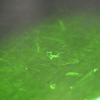Ops Shift Log: 12/11/2017, Day Shift 16:00 – 00:00 (08:00 - 16:00) Time - UTC (PT)
State of H1: Unlocked - Vent
Intent Bit: Engineering
Support: N/A
Incoming Operator: N/A
Shift Summary: Continuing non-laser vent work
Activity Log: Time - UTC (PT)
16:20 (08:20) Relieve Cheryl in Ops
16:31 (08:31) Cheryl – Going to HAM2
16:44 (08:44) Ed – Going to HAM2
16:58 (08:58) Cheryl & Ed – Out of LVEA for morning meeting
17:00 (09:00) Door Crew – Installing both HAM5 and HAM6 North side doors
17:30 (09:30) Cheryl & Ed – Going to HAM2 for IO alignment and closeout work
18:00 (10:00) Dave – Restarted FW1 – It crashed at ~ 17:00PT on Sunday
18:10 (10:10) Door crew – Finished with doors on HAM5 and HAM6
18:20 (10:20) Hugh – SEI cleanup around HAM5
18:38 (10:38) Sheila & TJ – Going into Optics Lab – Will be Laser Hazard
19:00 (11:00) Door Crew – Moving HAM4 cleanroom towards HAM5 for vacuum pump work
19:20 (11:20) Shelia & Terry – Out of the LVEA
19:32 (11:32) Cheryl & Ed – Out of the LVEA
19:50 (11:50) Hugh – Out of LVEA – HAM5 cleanup is complete
12:30 (12:30) Karen – Cleaning in the Optics Lab
20:40 (12:40) Door Crew – Out of LVEA – Cleanroom is over tube for vacuum pump install
20:42 (12:42) Filiberto – Going to End-X to work on access control system
20:47 (12:47) Sheila, Nutsinee, and TJ – Out of the Optics Lab
20:56 (12:56) Karen – Out of the Optics Lab
21:37 (13:37) Peter – Transitioning LVEA to Laser Hazard
21:42 (13:42) Ed & Cheryl – Going to HAM2 for IO work
21:46 (13:46) Filiberto – Back from End-X
21:52 (13:52) Hugh – Going to LVEA to retrieve some equipment
22:03 (14:03) Hugh – Out of the LVEA
22:09 (14:09) Sheila – Into the LVEA to look for equipment – then into the Optics Lab
22:09 (14:09) TJ – Going into the Optics Lab
22:10 (14:10) Terry – Going into the squeezer bay
22:11 (14:11) Nutsinee – Going into Optics Lab
22:35 (14:35) Filiberto – Going into LVEA to work on Access control system
22:36 (14:36) Richard – Going to assist Filiberto with access controls system
22:43 (14:43) Richard – Out of the LVEA
23:34 (15:34) Chandra – Going into the LVEA
23:56 (15:56) Filiberto –Finished in the LVEA
00:00 (16:00) End of shift





















